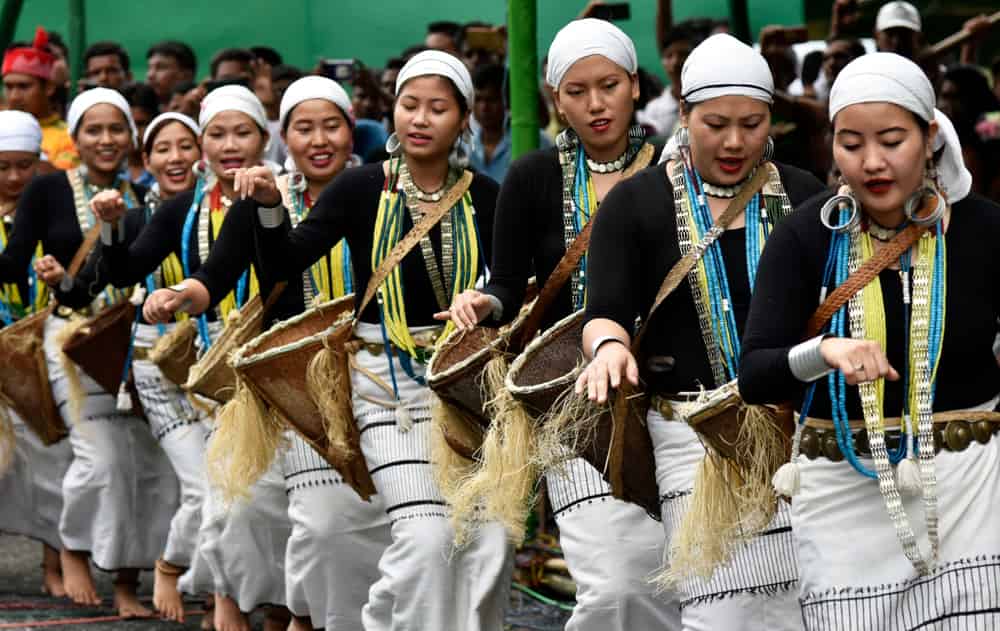Empowerment Through Tradition: Inside Meghalaya's Matrilineal Society
Tucked away in Meghalaya’s undulating hills is a civilisation that rejects the patriarchal conventions that permeate most of India. This northeastern state’s Pnar and Garo tribes have long maintained a matrilineal social system that empowers women and questions conventional gender roles. Through their age-old rituals and beliefs, matrilineal society in Meghalaya offers a potent counterweight to the myth that gender equality is only a Western invention.
History
Drawing their lineage back to the broader Khasi tribe, the Pnar people claim ancestry from the “Ki Hynϱiew Trep” or the “Children of the Seven Huts.” The monarchs of the ancient Jaintia Kingdom belonged to the Synteng group, which their forefathers belonged to. Later, in 1835, the British East India Company annexed this kingdom, which now forms a portion of the province of Assam. Following the creation of the state of Meghalaya in independent India in 1972, the district of Jaintia Hills was created.
Despite changes in administrative structures and political boundaries, the people in matrilineal society in North East of India have managed to preserve their distinctive identity, language, and customs. Ensuring the transmission of ancestral wisdom and property through successive generations of Pnar women, their matrilineal tradition has maintained its unique legacy in Meghalaya’s verdant hills and valleys.
Spirituality and Religion
The Pnar community in Meghalaya has a deep and dynamic spiritual history based on their traditional Niamtre religion. They think that this religious system was given to them by God, not created by human hands. Three cardinal principles—Tipbru tipblai, Tipkur tipkha, and Kamai yei hok—are the foundation of Niamtre. These principles strongly emphasise acting morally, doing what one owes to others, and showing respect for one’s parents as a means of getting closer to God.
Even though the Jaintia Hills region is now home to the majority of Christians, specifically Catholics and Protestants, 40% of the Pnar people still adhere to their ancestral faith. This unshakable devotion to Niamtre highlights the Pnars’ unwavering determination to uphold their cultural identity and respect the knowledge of their ancestors despite the passage of time.
Rights, Roles and Responsibilities
In the matrilineal societies of Meghalaya, women and men have different but equally essential rights and responsibilities. Women have the right to own property and pass it down to their daughters. They are responsible for taking care of the family and household. Men support women and families financially. While women make important decisions about their families, men play key advisory roles. They also take responsibility for protecting the community from external threats. Both genders are involved in public affairs.
Traditionally, women have had more autonomy compared to patriarchal societies. However, both sexes see each other as invaluable societal contributors rather than competitors. The system focuses on cooperation and equality between genders within their well-defined roles.
Cuisine Of Meghalaya
The Pnar people of Meghalaya sincerely appreciate bold and filling flavours. Their daily meals are centred around meat, with dishes featuring tender goat, duck, and squirrel, among other more daring options.
Don Sain, the quintessential Pnar dish, is made with tender pork strips cooked in a flavourful sesame sauce, giving each bite an explosion of flavour. Pnar stews, curries, and side dishes frequently feature locally grown vegetables, such as pumpkins, beans, and leafy greens, which give the food a hint of freshness and brightness.
In addition to the main courses, the Pnars enjoy specialities like Doh Khleh, a spicy treat, and Ja Doit, a rice porridge cooked with regional herbs and spices. The renowned Ka Sohliah, a handmade rice beer that gives a delightfully sour and fizzy drink, is a must-have for every Pnar feast.

Festivals
The Pnar tribe celebrates many festivals throughout the year. These festivals are an essential part of their culture. Behdeinkhlam is a harvest festival where they chase away evil spirits. They want a good harvest. Chad Sukra is a fire festival for purification. It helps cleanse themselves. Chad Pastieh is a festival of thanksgiving. They give thanks for the past year. They want another excellent year. This festival has dancing and feasting.
Laho Dance is an important festival. In this festival, they tell the story and history of the matrilineal society tribes through dance. They perform dances that represent significant events. All the festivals involve the community. People come together to celebrate. The celebrations have traditional music, dance, and food. This helps keep their culture alive and brings the community closer.
Occupations
The Pnar tribe has traditionally participated in several occupations. Agriculture is vital for them. They grow crops like rice, corn, and millet on the fertile hills, using traditional farming methods suited for hilly areas. They also raise livestock like pigs and goats, which provides them with food and income. Pnar women are expert weavers. They weave beautiful fabrics using local materials and designs. These fabrics are part of their culture.
Pnar people also make crafts from bamboo and wood. They make useful items and musical instruments, showcasing their connection to nature. Some Pnars now also work in other jobs. Some have government jobs or work in education and healthcare. While some do this for money, they still keep their traditions alive. A variety of occupations help the matrilineal society tribes thrive in their homeland.
Conclusion
Matrilineal society in India serves as a testament to the innate egalitarianism within India’s cultural fabric. By entrusting women with property inheritance, decision-making authority, and public representation, these tribes have created an environment where both genders can thrive and contribute equally to the well-being of their communities. As the world continues to grapple with issues of gender equity, the Pnar and Garo peoples offer a valuable lesson – that empowering women is not merely a modern ideal, but a profound tradition rooted deep within the East.